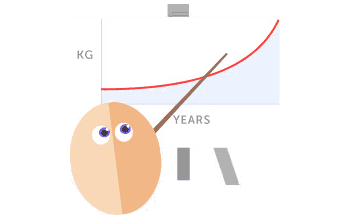For anyone who has wondered if the metabolically healthy obese participants in a large-scale study remain that way over a lengthy period of follow-up: http://content.onlinejacc.org/article.a ... ID=2087915
This is based on data from the classic Michael Marmot Whitehall II cohort study of British government workers., Researchers looked at the natural course of healthy obesity – where this was defined as a lack of metabolic risk factor clustering in obesity for purposes of this study – over two decades.
Of the 2,521 participants ages 39 to 62 years old (75% male), 66 were healthy obese adults at baseline (measured in 1992 or 1994).
Obese participants were categorised as those with a BMI as ≥ 30kg/m2
Metabolically healthy patients were categorised as those with fewer than 2 of the following: HDL level <1.03 mmol/l (men) and <1.29 mmol/l (women); blood pressure ≥ 130/85 mm Hg or use of antihypertensive medication; fasting plasma glucose level ≥ 5.6 mmol/l or use of antidiabetic medication; triacylglycerol level ≥ 1.7 mmol/l; and homeostatic model assessment of insulin resistance less than 2.87.
The study participants had followup data collected on obesity and metabolic status at every five years. The results of the study report that after 5 years, 32% of healthy obese participants were re-categorized as unhealthy obese. As above, after 20 years (2012/2014), 52% of healthy obese at baseline were unhealthy obese, with only 10 percent measured at healthy non-obese.
The authors note that the “natural course of healthy obesity is progression to metabolic deterioration.”
Lead study author, Joshua Bell, says,
There is a fair amount of nuance involved as over the time period there have been shifts in BMI cut-off points for judging some demographics to be normal weight/overweight/obese. Nonetheless, interesting.
After 20 years, approximately one-half of healthy obese adults were unhealthy obese, and only 10% were healthy nonobese. Healthy obese adults were nearly 8 times more likely to progress to an unhealthy obese state after 20 years than healthy nonobese adults, and these subjects were consistently more likely to make this adverse transition than healthy nonobese adults. Progressions from healthy to unhealthy obesity also increased steadily with increasing follow-up duration...
This is based on data from the classic Michael Marmot Whitehall II cohort study of British government workers., Researchers looked at the natural course of healthy obesity – where this was defined as a lack of metabolic risk factor clustering in obesity for purposes of this study – over two decades.
Of the 2,521 participants ages 39 to 62 years old (75% male), 66 were healthy obese adults at baseline (measured in 1992 or 1994).
Obese participants were categorised as those with a BMI as ≥ 30kg/m2
Metabolically healthy patients were categorised as those with fewer than 2 of the following: HDL level <1.03 mmol/l (men) and <1.29 mmol/l (women); blood pressure ≥ 130/85 mm Hg or use of antihypertensive medication; fasting plasma glucose level ≥ 5.6 mmol/l or use of antidiabetic medication; triacylglycerol level ≥ 1.7 mmol/l; and homeostatic model assessment of insulin resistance less than 2.87.
The study participants had followup data collected on obesity and metabolic status at every five years. The results of the study report that after 5 years, 32% of healthy obese participants were re-categorized as unhealthy obese. As above, after 20 years (2012/2014), 52% of healthy obese at baseline were unhealthy obese, with only 10 percent measured at healthy non-obese.
The authors note that the “natural course of healthy obesity is progression to metabolic deterioration.”
Lead study author, Joshua Bell, says,
“healthy obese adults show a greater risk for developing cardiovascular disease than healthy normal-weight adults, although this risk is not as great as for the unhealthy obese... Healthy obesity is only valid if it is stable over time, and our results indicate that it is often just a phase. All types of obesity warrant treatment, even those which appear to be healthy. And as we now see, healthy obese adults tend to become unhealthy obese over time, providing further evidence against the idea that obesity can be healthy.”
There is a fair amount of nuance involved as over the time period there have been shifts in BMI cut-off points for judging some demographics to be normal weight/overweight/obese. Nonetheless, interesting.





